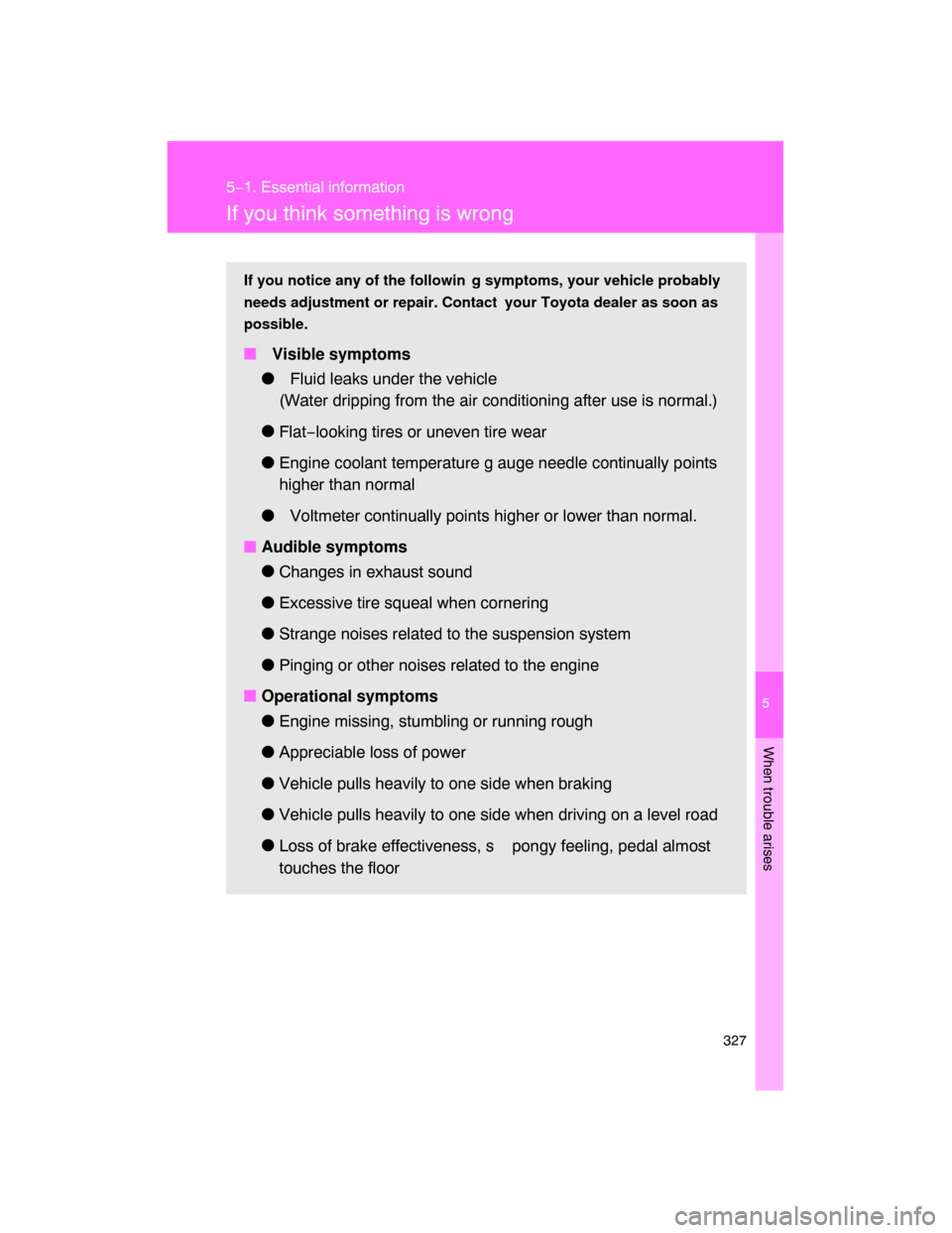Page 83 of 400
84 1−7. Safety information
CAUTION
� Modification and disposal of SRS airbag system components
Do not dispose of your vehicle or perform any of the following modifications
without consulting your Toyota dealer.
The SRS airbags may malfunction or deploy (inflate) accidentally, causing
death or serious injury.
� Installation, removal, disassembly and repair of the SRS airbags.
�
Repairs, modifications, removal or replacement of the steering wheel,
instrument panel, dashboard, seats or seat upholstery, front and rear pil−
lars or roof side rails.
� Repairs or modifications of the front
fender, front bumper, or side of the
occupant compartment.
�Installation of snow plows, winches, etc. to the front grille (bull bars, kan−
garoo bar etc.).
� Modifications to the vehicle’s suspension system.
�Installation of electronic devices such as mobile two−way radios or CD
players.
� Modifications to your vehicle for a person with a physical disability.
Page 140 of 400

142 2−4. Using other driving systems
� Sensor detection information
� Certain vehicle conditions and the surrounding environment may affect
the ability of a sensor to correctly detect an obstacle. Particular instances
where this may occur are listed below.
�There is dirt, snow or ice on a sensor.
�A sensor is frozen.
�A sensor is covered in any way.
�The vehicle is leaning considerably to one side.
�On an extremely bumpy road, on an incline, on gravel, or on grass.
�The vicinity of the vehicle is noisy due to vehicle horns, motorcycle
engines, air brakes of large vehicles, or other loud noises producing
ultrasonic waves.
�There is another vehicle equipped with parking assist sensors in the
vicinity.
�A sensor is coated with a sheet of spray or heavy rain.
�The vehicle is equipped with a fender pole or radio antenna.
�A bumper or sensor receives a strong impact.
�The vehicle is approaching a tall or right−angled curb.
�In harsh sunlight or intense cold weather.
�The area directly under the bumpers is not detected.
Objects lower than the sensors or thin stakes etc. may be detected ini−
tially, but as they draw closer, they may cease to be detected.
�A towing hitch is mounted to the vehicle.
�A non−genuine Toyota suspension (lowered suspension etc.) is
installed.
In addition to the examples above, there are instances in which, because of
their shapes, signs and other objects may be judged by a sensor to be closer
than they are.
� The shape of the obstacle may prevent a sensor from detecting it. Pay
particular attention to the following obstacles:
�Wires, fences, ropes, etc.
�Cotton, snow and other materials that absorb radio waves
�Sharply−angled objects
�Low obstacles
�Tall obstacles with upper sections projecting outwards in the direction
of your vehicle
Page 322 of 400

5
When trouble arises
327
5−1. Essential information
If you think something is wrong
If you notice any of the followin g symptoms, your vehicle probably
needs adjustment or repair. Contact your Toyota dealer as soon as
possible.
� Visible symptoms
� Fluid leaks under the vehicle
(Water dripping from the air conditioning after use is normal.)
�
Flat−looking tires or uneven tire wear
�Engine coolant temperature g auge needle continually points
higher than normal
� Voltmeter continually points higher or lower than normal.
�Audible symptoms
�
Changes in exhaust sound
�
Excessive tire squeal when cornering
�Strange noises related to the suspension system
�
Pinging or other noises related to the engine
�
Operational symptoms
�Engine missing, stumbling or running rough
�
Appreciable loss of power
�
Vehicle pulls heavily to one side when braking
�Vehicle pulls heavily to one side when driving on a level road
�
Loss of brake effectiveness, s pongy feeling, pedal almost
touches the floor